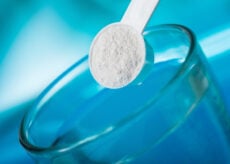Keto Sweeteners: Here are the 5 Best Low-Carb Sweeteners

Whether you are adhering to a ketogenic diet or not, one of your goals is likely to find a low-calorie, low-carb sweetener. This is a good plan for anyone as it can help prevent the sugar spikes and crashes that are part of consuming the usual sugars so prevalent in our diets today.
What you may not know is that sugar substitutes should also be used only sparingly in your healthy diet to avoid any potential health risks. And artificial sweeteners such as aspartame, sucralose, acesulfame potassium (AceK), and saccharin should always be avoided, as should high fructose corn syrup and brown sugar.
Some folks may be scratching their heads at that last option—brown sugar—because we have been taught that by avoiding “white” foods, we’re playing it safe. This is not the case when it comes to brown sugar, because truth be told, commercial brown sugar is simply white sugar with 5 – 10% molasses added to it.
The guidelines for the ketogenic diet encourage the consumption of healthy fats. In fact, the majority of the meal plan, roughly 70 – 80%, comes from fats. With 20 – 25% of the ketogenic meal plan coming from protein, this leaves only 5 – 10% coming from carbohydrates. Since the concern with most sugar and sugar substitutes comes from carbohydrates, this limits how one can include these in a ketogenic diet.
Knowing this information, we can also rule out a few sugar alternatives that aren’t inherently “bad” but that contain way too many carbohydrates to be considered “acceptable” on a ketogenic diet. Sweeteners like maple syrup, honey, and coconut sugar are clearly off the menu.
So, which sweeteners can be considered keto sweeteners? We got you…
The 5 Best Keto Sweeteners
1. Stevia
It may come as no surprise that my number 1 recommendation for a keto sweetener is stevia. It is perfect for adhering to a keto diet (or any diet for that matter).
Stevia, also called Stevia rebaudiana, is a plant that is a member of the chrysanthemum family, a subgroup of the Asteraceae (ragweed) family.
Just one pinch of stevia powder is equal in sweetness to about one teaspoon of table sugar.
My favorite ways to use stevia include, but are not limited to:
- Coffee or tea
- Homemade lemonade (water, fresh lemons, stevia)
- Oatmeal or NOatmeal
- Fruit smoothies
- Greek yogurt
One 2010 study of 19 healthy, lean participants and 12 obese participants found that stevia significantly lowered insulin and glucose levels. It also left study participants satisfied and full after eating, despite the lower calorie intake.
In a 2009 study, it was discovered that stevia may help manage cholesterol. Participants used 400 ml of a stevia extract daily for a full month. The study found the keto sweetener lowered total cholesterol, LDL (“bad”) cholesterol, and triglycerides with no negative side effects. It also increased HDL (“good”) cholesterol.
2. Monk Fruit
Monk fruit, Siraitia grosvenorii, also known as lo han guo, comes from a small round fruit grown in Southeast Asia. Monk fruit sweeteners are extracted by removing the seeds and skin, and crushing the fruit which produces juice.
Along with stevia, monk fruit is one of the 8 high-intensity, low- carb sweeteners currently approved by the FDA.
Much like stevia, a little goes a long way, as monk fruit is up to 250 times more potent as a sweetener than white table sugar.
Some of my personal favorite ways to use monk fruit are:
- In baked goods/baking
- In sauces and dressings
- Atop sour fruits (i.e., grapefruit)
- On oatmeal and cereal
While stevia and monk fruit would be my top two keto sweeteners, we can’t rule out a few more options due to their macros.
3. Tagatose
Tagatose as a food additive is artificially produced from lactose, which is obtained from whey (from cow’s milk). It has a clean, neutral sweet taste and is 75 – 92% as sweet as sucrose. It is most commonly found naturally in apples, pineapples, oranges, raisins, and dates.
With only 1.5 calories per gram, tagatose has almost no effect on blood glucose levels. It does not contribute to net carbs, so it can be subtracted from the total carbs after you’ve been on the keto diet for a while.
Tagatose can be used as a sugar substitute, texturizer, humectant, stabilizer or flavor enhancer in coffee, yogurts, chewing gum, candies, chocolate, baked goods, frozen dairy products, ready-to-eat cereals, frostings and fillings.
Be careful when using it to bake with as it tends to brown quickly even at lower temperatures. When used in baking, I tend to combine it with other sweeteners on the list for improved flavor and texture and because using more than a little at a time can cause digestive issues.
4. Erythritol
Erythritol is produced by fermentation of glucose, derived from wheat or cornstarch, by using non-pathogenic yeasts like non-GMO Moniliella pollinis or Trichosporonoides megachilensis. It is most commonly found naturally in pears, melons, grapes, and mushrooms and in yeast-derived foods such as wine, beer, sake, soy sauce, and cheese; it is also present in the human body.
Erythritol provides only 0.2 calories per gram and has zero net carbohydrates, making it a great addition to any keto sweeteners list.
It is found in candies, chocolates, ice cream, chewing gums, dairy products, baked products, yogurts, jellies, fillings, jams, coffee syrups, soda, energy drinks, vitamin water, and lozenges.
It’s also used in numerous keto-friendly dessert recipes like these delicious Lava Cakes, Pecan Delights, and my favorite fat bombs.
5. Xylitol
Xylitol is produced by adding hydrogen to monosaccharide xylose, which is made from corn cobs, sugar cane, or birch wood and is commonly found naturally in plums, strawberries, raspberries, blueberries, cauliflower, endive, lettuce and spinach. In small amounts, it is also produced in the human body.
Once absorbed, xylitol can be metabolized and can provide 2.4 calories per gram or converted to glycogen.
Xylitol can be found in chewing gum, candies, breath mints, chocolate, ice cream, cookies, “sugar-free honey,” diet soda and other drinks, as well as jams and jellies. I also like to combine xylitol with other low-carb sweeteners when cooking such as in this Tiramisu recipe from Shelly Wells, our keto chef extraordinaire.
IMPORTANT: Xylitol is very dangerous for dogs, so if you have dogs in your family, ensure you keep anything that contains xylitol well away from them.
Top 5 Keto Sweeteners: A Recap
If you’re cutting back on carbs or following the keto diet, you can still enjoy the occasional sweet. Just stick with the keto sweeteners above and avoid artificial sweeteners that can do more harm than good.






